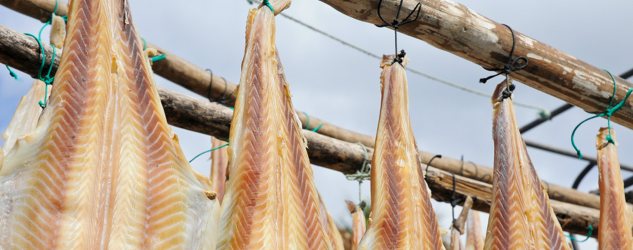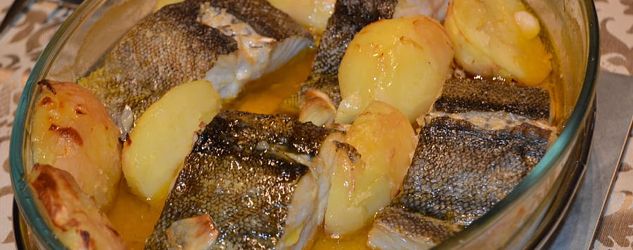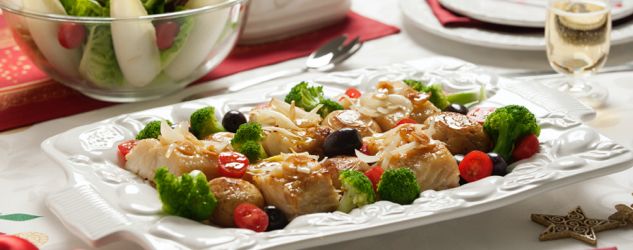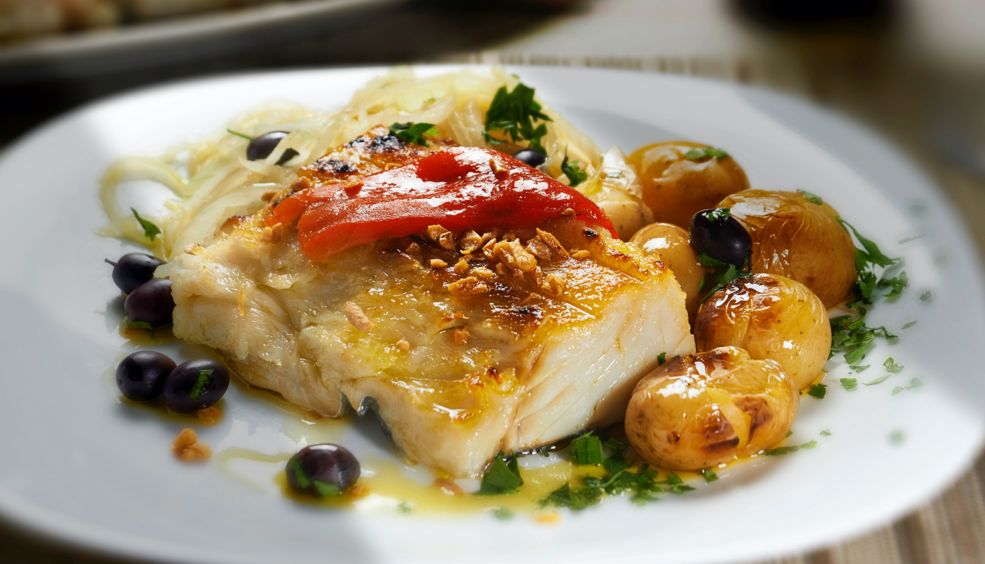Cod is a major institution in Portugal. Across the length and breadth of the country, you'll find it on every menu every day. Which is why we've prepared a useful little guide to help you learn more about this fish, including its history as well as the cultural and gastronomic aspects. And make no mistake… you'll be licking your fingers!
Cod is dried and salted.

Caught all year round, this cold-water marine fish is very low in calories and highly nutritious. Before it's cooked, it has to be desalted by changing the water several times over 24 to 36 hours.
The Portuguese are the world's biggest cod consumers.
Roasted, boiled, grilled, flaked, creamed, in salad... It's served in every format and with every possible side dish.
It first found its way into Portuguese cuisine back in the 10th century, when the Scandinavians established colonies in Portugal in search of salt. That's how the Portuguese acquired their expert knowledge of navigation in the Atlantic and discovered cod. In 1353 Peter I of Portugal and Edward II of England signed a treaty allowing the fishermen of Lisbon and Porto to catch fish on the English coasts for a period of 50 years. In 1974 cod fishing was restricted in Portugal, which meant that the country had to import it.
Culturally, the consumption of "bacalhau" is attributed to two key factors.
The first is the form of preservation: as a non-perishable product, it was accessible to the majority of the population, who could rarely afford to buy fresh fish. And the second is that its consumption was encouraged as a substitute for foods banned for religious purposes. In periods of fasting and abstinence, no meat was eaten, so cod came to occupy a prominent place in Portuguese culture.
Cod is the star ingredient in thousands of recipes.

They say there's one for every day of the year, but there are undoubtedly many more. They also say that every family has their own way of preparing it... which is probably closer to the truth. That said, some traditional recipes are absolute musts if you want to discover Portugal's rich cuisine, from north to south, which is closely tied to the geographical characteristics and climate of each region.
- Lisbon: grilled cod, one of the most popular recipes, comprises flaked cod, finely sliced fried potatoes, fried onion, eggs, olives and parsley. Apparently, a tavern in the Upper Town invented this dish but today you'll find it in nearly every traditional restaurant.
- The Algarve: Algarve-style cod. The fish is fried and served with onion and potatoes.
- Alentejo: açorda is a garlic soup made with hard bread, little pieces of cod and eggs.
- Sintra: spiritual cod is a roast dish served at Easter. It consists of a fillet of fish, carrots and white sauce.
- Porto: This marvellous city is home to numerous recipes. Zé do Pipo cod is a fillet of fish covered with a mayonnaise crust. It was invented by a restaurant of the same name to take part in a culinary competition in the city. "Bacalhau à Gomes Sá", cooked in milk and served with potatoes and hard-boiled eggs, was invented by the O Lisbonense restaurant; "bacalhau à João do Buraco" is the favourite dish of seafood lovers. The cod is boiled and served with prawns and clams.
- Viana: Viana do Castelo cod is covered with cabbage leaves.
More information: For those of you who want to improve your knowledge of Portuguese cuisine and culture, in the north of country, in Viana do Castelo, you can visit the old shipyard from where the cod fishing fleet used to set sail. "Gil Eanes", named after one of the great mariners of the 15th century, is the most famous boat in the fleet. It's also the name of a cod and chickpea dish.
"Bacalhau" is one of the main foods in Portuguese cuisine.
And, as such, it's a notable influence in the country's history, economy and culture. There are numerous museums and fairs dedicated to cod.
And as you would imagine, cod is also a prime ingredient of the traditional Christmas meal.

Known as "Consoada de Natal", it's baked in the oven with potatoes and cabbage as a testament to the simplicity and frugality that surrounded the birth of Jesus.
Did you know that...?
- Today, the "bacalhau" found in Portugal is imported from Norway, Iceland and Russia. It's consumed salted, dried and fresh. The fresh variety is processed by Portuguese fish products industries.
- The main cod salting facility is Riberalves in Moita, near Lisbon, which processes 100,000 tonnes per year of this fish.
If you're a lover of cod or a gourmet traveller, discover (and sample) the top "bacalhau" dishes in Portugal. Your air ticket is just a click away.







